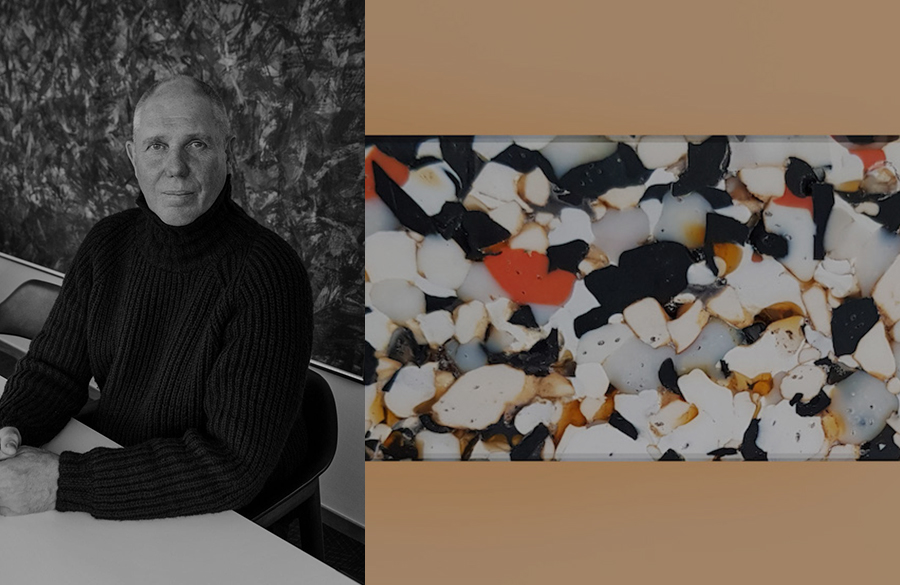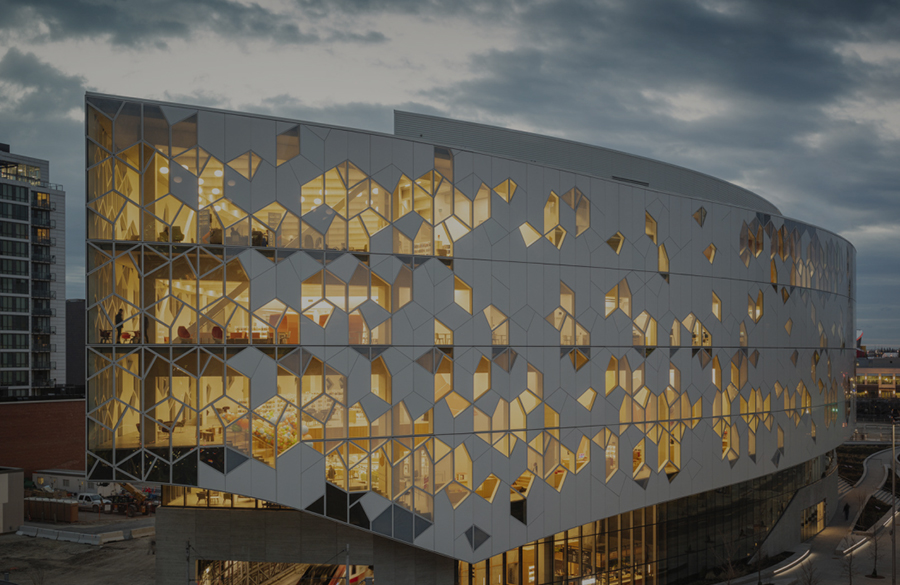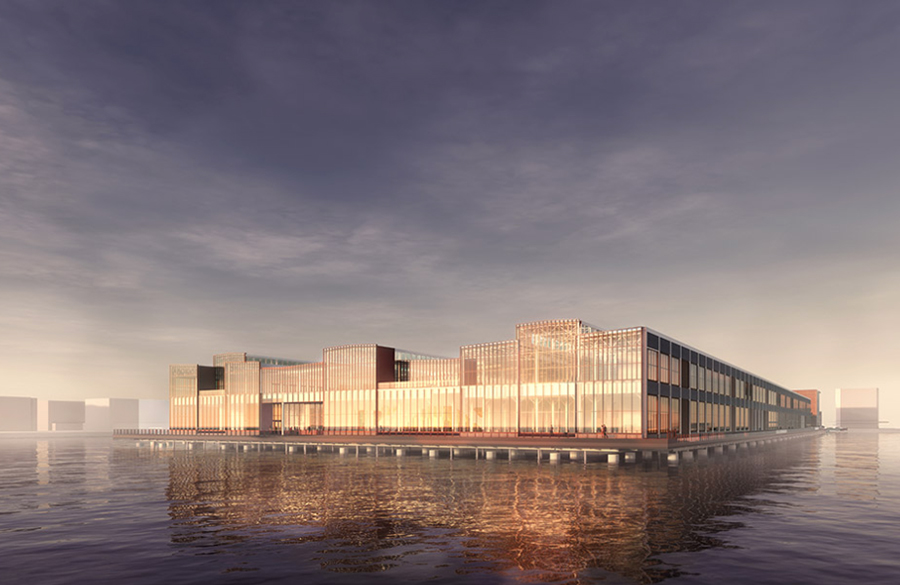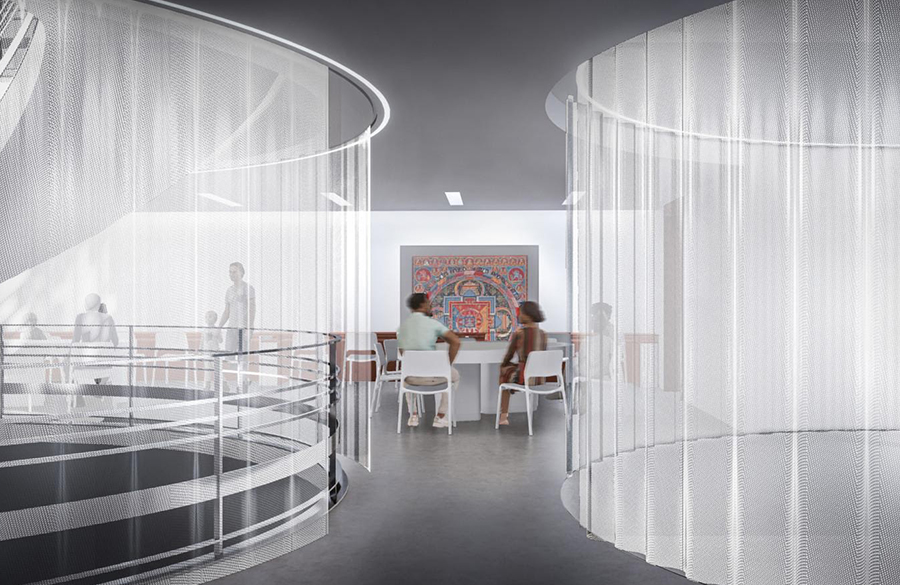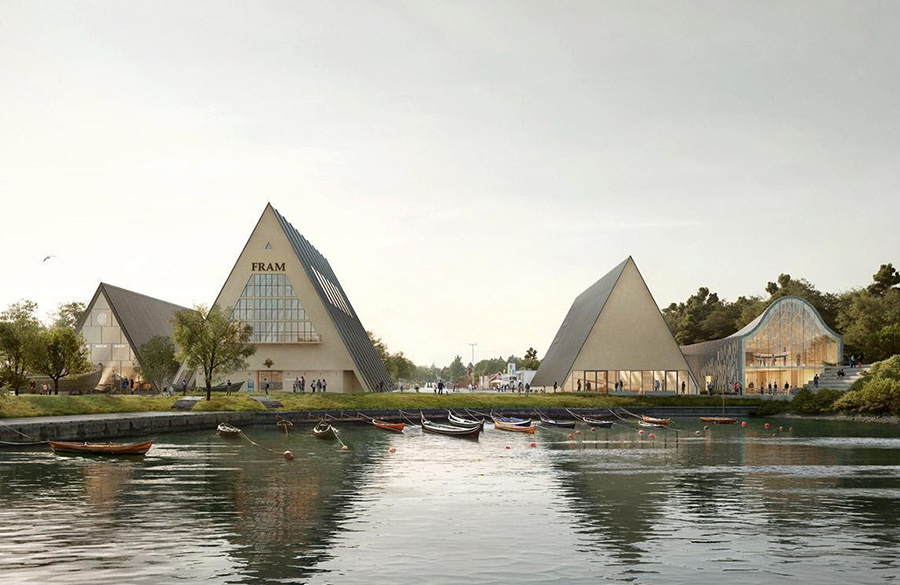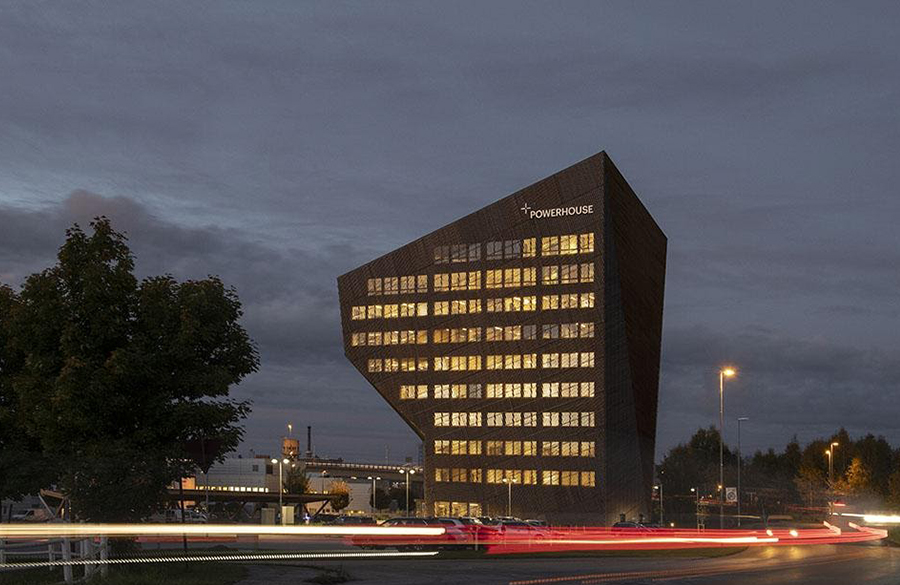On 21st October 2020, Håkan Nordin– head of sustainability at flooring company Bolon conversed in a live session with the founder and editor-in-chief of Dezeen, Marcus Fair to discuss the stance of Bolon on the use of Plastic and their vision for a more sustainable future. Håkan Nordin– a former climate activist, who co-founded the Swedish branch of Greenpeace (a Non-governmental organization) has helped the Swedish government and brands like H&M and IKEA on ways to improvise their strategies which can lessen their impact on our environment. He graduated from Umeå University with a bachelor’s degree in organic chemistry in 1982 and since then has dedicated himself to the field of climate change solutions. He also instituted Miljökompassen – an environmental consultant company in Sweden in 1990, making it the first of its kind.
The following interview organized by Dezeen for Bolon is a part of RETHINKING PLASTIC– a two-year programme which aims to re-evaluate our relationship with Plastic. The curriculum consists of a series of talks, workshops, exhibitions, and excursions that shall run from September 2020 up to December 2022. These symposiums will help us understand the characteristics of the materials we use, aiding the designer’s community to become conscious of the materials that may become harmful for our atmosphere, and hence leading us to a better solution for climate change.

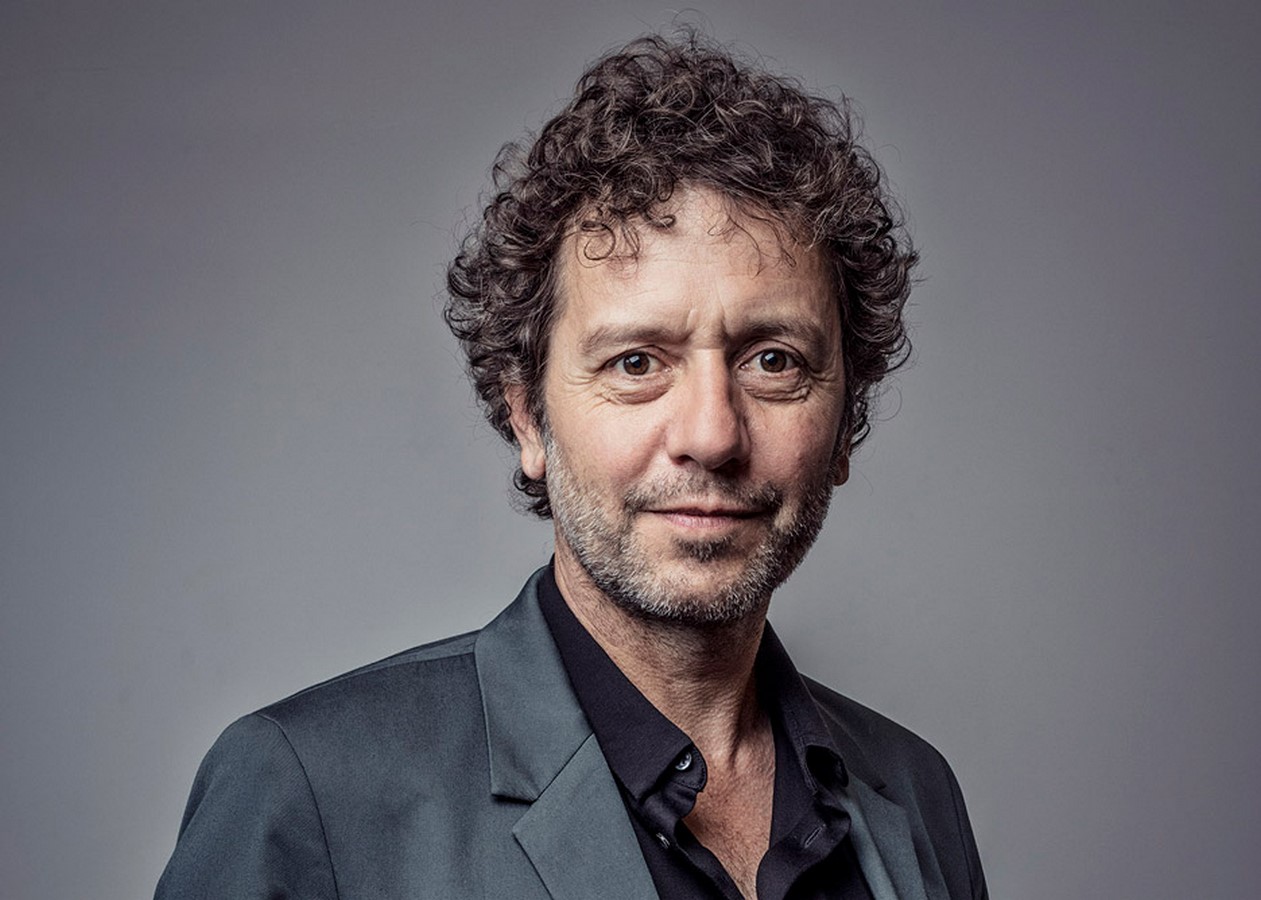
Bolon – There Ideas and Strategies:
Instituted by textile designer Nils-Erik Eklund in 1949, Bolon is a flooring company known for its flooring products made of Polyvinyl Chloride (PVC). The company practices energy-efficient designing, manufacturing, and transportation techniques with a 100% use of renewable energy which in turn reduces the carbon footprint to zero. The sustainability head of the organization, Håkan Nordin, claims that with the application of 20% recycled content and non-hazardous additives in their products, the company further drives towards enhancing environmental performance. Sustainability depends upon two parameters, namely, Circularity (reusing the recycled products) and climate, according to Nordin. The company has worked actively for 20 years of intending to preserve our environment. The corporation follows a step-by-step program to find various ways to increase the recycling of materials and using those for production. They plan to put specific steps into action and try to achieve 100% circularity of materials in a period of the next 20 years. ( Here, 100% circularity of materials shall result in zero waste which in turn will enhance the phenomena of sustainability of products.)
Such strategies if adopted by other industries can lead to a decrease in the impact of hazardous materials on our climate, therefore diminishing climate change.
Bolon For Climate – Using Plastic Without Climate Impact:
The establishment not only uses 100% recycled materials to produce their flooring products, but they also use 100% renewable energy in making all of these products, which results in zero climate impact. They achieve 100% renewable energy through the use of hydroelectric power. As discussed above, Bolon uses Woven Vinyl flooring, wherein PVC (Polyvinyl Chloride) is a synthetic plastic polymer that contains high strength. Nordin suggests that by using the environment labeled PVC raw material, not only do they get better durability of the product, but they are also able to recycle the waste Plastic back into their flooring creations.
He also explained the future goals of Bolon in the interview, which is to design with 50% Circularityensuing 50% Less Climate Impact. By 2028, Bolon desires to offer predominant products to its clients that are a part of the circular material flow and safer for humans and our natural surroundings.
Plastic –A “Resource Efficient” material that helps “Reduce Climate Change?”
According to Nordin, 90% of the world’s fossil fuels (oils and gases) are scorched for the production of energy to run mechanisms like electricity, transportation, heating, and cooling. The burning of fossil fuels is the main problem causing climate change, and concurrently the production of Disposable Plastic is the cause of Plastic Pollution in our oceans. The igniting of fossil fuel forms residue in an unburned state. This unburned residue converts to plastics and various chemicals in the factories.
Now, this Plastic generates two variants, the first being the disposable products used for packaging, and the other is called Construction Plastic. During the discussion, Marcus and Nordin weighed upon the pros and cons of using Construction Plastic, of which Nordin stated that the following kind helps reduce the amount of burning fossil fuels and is used to make long-lived, durable products. Not only that, but Construction Plastic is a light, easy to forge, and tenacious material that also happens to be resource-efficient. When compared to heavier materials like Steel, Construction Plastic helps reduce climate change because one requires less amount of energy to manufacture it.
To support his argument, he details the casting process of Steel. Steel is a heavy material, which requires a 1000 degree Celsius to heat before the process of shaping, implying that it requires more burning of fossil fuel energy. On the other hand, lightweight thermoplastics like Construction Plastic require about 200 degree Celsius heat energy to mold. He also quotes that with the use of 200 kilograms of Construction Plastic, a vehicle shall weigh lighter and hence would require less petrol/diesel to run. Another example he provided in the conversation was of wind farms, which according to him are more competent when the turbines constitute Plastic blades.
Pointing at the examples where Plastic as material comes out to be a winner, Marcus Fair indulged about the fact that the use of Plastic is frowned upon in the design world, and imperative figures of the fraternity believe the using Plastic leads to climate change. To this, Nordin argued that the burning of fossil fuels (i.e. oils, gas, and coal) according to the principles of Circularity and reproducing Plastic will ultimately decrease the levels of climate change for the environment, rather than entirely burning them.
Talk over Bioplastics and Chemical Recycling to reduce Plastic Waste:
Towards the end of the live interview, Marcus touched upon the potential of Bioplastics, which are plastics produced from renewable biomass sources, such as recycled food waste, timber plantations, etc. According to Nordin, Bioplastics make up 1% of all plastics to replace fossil-based ones. The production of Bioplastics requires large amounts of land, and Nordin talked about his doubts since this material would compete and eventually exploit agricultural lands and plantations. For this, Nordin thinks using oil in Circular material flow is much more efficient and will avoid using forests and crops in the long run.
Lastly, the duo talked about the emerging technology of Chemical Recycling, which is set to replace expensive mechanical recycling. This process would help put Plastic in the run with metals like copper and aluminium, which are melted down, resold at affordable prices, and a portion of them is recycled. The following process will prevent the extra effort of buying and recycling materials differently and instead will break down the long molecular chains in the polymers which will be ready to use again.
The head of sustainability said that people are increasingly taking environmental issues seriously, and integrating the above solutions can help Plastic reduce climate change.
REFERENCES:
- Live interview, 21st October 2020, https://www.dezeen.com/2020/10/19/hakan-nordin-rethinking-plastic-livestream-talk/
- Bolon, About Climate Change, https://www.bolon.com/en/sustainability/climate
- Bolon, Stance on Sustainability, https://www.bolon.com/en/newsroom/news/2020/sustainability-at-bolon


